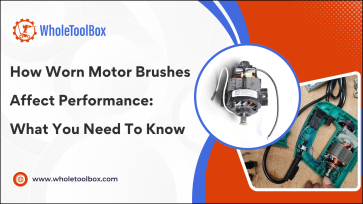Leaf blowers are essential tools for yard maintenance, but like any power equipment, they can experience wear and tear over time. Troubleshooting and replacing parts can extend the life of your leaf blower and ensure it operates efficiently. Common issues include engine trouble, loss of power, or faulty components like spark plugs, air filters, or fuel lines. Understanding how to diagnose these problems and perform basic repairs can save time and money. Whether you're using a gas, electric, or battery-powered model, having a step-by-step approach to identifying and fixing issues is key. In this guide, we’ll walk you through how to troubleshoot common problems and replace worn or damaged leaf blower parts to keep your equipment running smoothly.
Understanding Leaf Blower Parts and How They Work
Your leaf blower parts need troubleshooting when its components develop operational issues such as starting problems or rough running, or power loss. Start by checking the fuel supply for gas models and the battery power for cordless models. Your blower may fail to operate correctly because of three common problems: a dirty air filter, a clogged fuel line, or a worn spark plug. Begin your inspection by checking the air filter because a dirty or clogged filter needs cleaning or replacement. The spark plug needs examination to check for any signs of wear or damage. Replace any plug that shows blackened or corroded conditions. The fuel system requires the replacement of filters and lines when they appear brittle or blocked due to old fuel remaining in the tank.
When inspecting electric leaf blowers, check for damage on the power cord and switch. A professional repair may be needed to fix internal wiring or motor issues when the blower fails to operate. Most basic parts of leaf blowers can be easily repaired through simple tool usage. Always check your user manual to find the correct part numbers and follow the provided instructions. Regular maintenance alongside immediate replacement of parts allows your leaf blower to operate powerfully throughout multiple seasons.
Get your leaf blower back in action with WholeToolBox, your trusted source for quality parts from top brands like Kawasaki, Husqvarna, Echo, and Little Wonder. Whether you need a spark plug, air filter, carburetor, or starter assembly, we’ve got you covered with reliable replacements. Shop with confidence and keep your yard tools running like new!
Common Leaf Blower Part Issues and How to Spot Them
The identification of early wear indicators in leaf blower parts enables you to avoid major system failures. The following list presents typical part-related problems along with their detection indicators:
Spark Plug: A spark plug that shows signs of wear will create problems with starting and produce rough engine operation and misfiring. Check for carbon deposits as well as oil contamination and rust, and ceramic cracks because these conditions disrupt proper ignition.
Air Filter: Engine power decreases and airflow becomes restricted while engine sputtering occurs when air filters become clogged. A darkened or visibly dirty air filter will block air intake and produce strange noises, and reduce engine performance.
Fuel Filter & Fuel Line: Engine stalling or sputtering occurs when filters become clogged or when fuel lines develop cracks. The presence of residue along with stiffness or fuel odor signals, restricted fuel flow or leaking components.
Carburetor: A carburetor that is either dirty or malfunctioning leads to engine problems such as hard starting and rough idling and unpredictable engine speed changes. A strong fuel odor that is strong combined with dirt accumulation near the intake and operational surging indicate potential problems.
Starter Assembly: The starter assembly requires replacement when the pull cord becomes difficult to pull back or feels loose. Spring or rope mechanism problems will produce grinding or clicking sounds.
Impeller & Fan: A weak suction combined with buzzing sounds indicates that the impeller has either cracked or jammed or contains debris buildup. The performance of the blower suffers because of these problems, which block airflow.
Battery (Cordless Models): Frequent shutdowns, long charging times, and reduced runtime point to a worn or defective battery. The indicators on the device flash when battery cells start to age.
How to Replace Faulty Leaf Blower Parts
Maintenance of leaf blower parts requires the essential replacement of faulty components to extend both lifespan and operational performance. Start by finding the defective component among the spark plug, air filter, carburetor, fuel lines, starter cord, and fan blades.
Diagnose the Problem: You should always test the issue before moving forward with new component installation. The blower displays three main warning signs: starting problems, power reduction, and abnormal operational sounds.
Turn Off and Disconnect: Safety first requires users to disconnect the spark plug wire and turn off their leaf blower before starting work.
Order Replacement Parts: After identifying the defective component, you should order its exact replacement from either the manufacturer or a reliable parts supplier. Fields within the owner’s manual will provide necessary information about part numbers along with specifications.
Remove the Faulty Part: The correct tools, including screwdrivers and wrenches, are necessary to detach the defective part. Record the original position of the part so you can install the new component correctly.
Install the New Part: Following the published manufacturer’s guidelines for installation, fit the new piece while making sure all the interfaces are safely attached.
Test the Blower: After reassembly, you should reconnect the spark plug before testing the leaf blower to verify its proper operation.
Maintaining your leaf blower regularly, along with proper replacement of faulty parts, will ensure top condition for multiple seasons.
Check out this guide on how to choose the perfect lawn mower for your yard to ensure your entire lawn care setup is efficient and reliable.
Leaf Blower Troubleshooting Tips for Performance Issues
A malfunctioning leaf blower can create frustration for users. The majority of leaf blower performance problems become diagnosable and fixable through straightforward troubleshooting procedures.
Step 1: Resolving leaf blower starting problems
To resolve this issue, check that your fuel remains fresh and that gas models receive proper mixing and contain no debris. The leaf blower spark plug requires replacement when you detect wear or carbon accumulation. Check that the choke is properly adjusted for starting and the throttle is set to its correct position.
Tip: The spark plug requires regular cleaning or replacement to stop starting problems and ensure smooth leaf blower operation.
Step 2: Check for power loss or inadequate airflow
The performance of the leaf blowers' air filters decreases when they become blocked or filled with dirt because this blocks airflow. The air filter needs to be removed for cleaning, or you can switch it with a fresh replacement. Examine filter housing components for all accumulated debris that could hinder airflow.
Replace the air filter either periodically or in peak usage periods so leaf blowers function at their peak airflow potential.
Step 3: The leaf blower fails to maintain proper
A leaf blower carburetor with accumulated debris may cause problems with its idle function. A thorough cleaning of the carburetor and fuel lines should be followed by checking the fuel filter for potential blockages. The carburetor needs replacement or rebuilding to achieve smooth idling when other fixes fail to resolve the issue.
Tip: Regular carburetor cleaning once per season helps maintain blower efficiency and prevents buildup formation.
Step 4: The Blower Develops Fuel Leakage
The cause of fuel leakage is typically damaged or cracked fuel lines. Check fuel lines thoroughly for wear damage, then replace all defective parts. Check that the fuel cap is tightly fastened to create a proper seal for the tank.
Tip: Place your leaf blower in a dry spot because this location protects fuel lines from damage which can lead to leaks.
Step 5: Unusual Noises or Vibrations
Check the fan blades for damage or blockages because these conditions produce noisy operation and unwanted vibrations. Check that the blower assembly is correctly built while inspecting all loose components that might produce noise. Check all loose bolts and screws for proper tightness.
Tip: You should check the impeller and fan housing and starter assembly for damage during regular inspections to ensure smooth operation.
Step 6: The blower stops running
A clogged carburetor or fuel lines typically cause this problem to occur. Thoroughly clean the carburetor by focusing on jet cleaning and fuel passage maintenance. Check both the fuel filter condition and inspect the fuel for water or contaminants to avoid performance issues.
Tip: Regular maintenance should include fresh fuel use and new fuel filter installation to prevent carburetor clogging.
For more troubleshooting tips on yard equipment, check out our simple guide.leaf blower troubleshooting tips for performance issues can help you identify and fix common problems.
When to Repair vs. When to Replace the Leaf Blower
The decision between repairing or replacing your leaf blower depends on how severe the problem is and how old your machine is. The following guidelines will assist your decision-making process.
Criteria | Repair | Replace |
Age of the Leaf Blower | Less than 5 years old | Over 5-7 years old |
Minor Issues | Clogged air filter, faulty spark plug, damaged starter cord | Persistent power loss, significant carburetor damage, or engine wear |
Motor Condition | The motor still runs smoothly | Motor shows signs of failure or inefficiency |
Cost of Repair | Less than half the cost of a new blower | Repairs cost more than half the price of a new blower |
Frequency of Breakdown | Infrequent breakdowns | Frequent breakdowns or part availability issues |
Usage Level | Light to moderate use | Heavy or overuse, especially in demanding conditions |
Efficiency | Still performs well after minor fixes | Significant loss of performance or efficiency |
Maintenance Tips to Prolong the Life of Your Leaf Blower
Leaf blowers need proper maintenance for them to operate smoothly throughout multiple years of service. Some essential steps that will help you maintain your leaf blower include the following:
Clean or Replace the Air Filter Regularly: A clean air filter maintains proper airflow, which allows the engine to operate at its optimal level. The air filter needs periodic checking every three months to determine when it becomes obstructed or damaged.
Inspect the Spark Plug: A malfunctioning spark plug leads to starting problems and reduced performance output. Regular checks should be performed to examine the electrode state, and you should replace it when signs of wear or corrosion appear.
Use Fresh Fuel: The carburetor becomes blocked by old fuel, which leads to starting difficulties. Use fresh fuel together with the proper oil ratio for mixing. Gas-powered leaf blowers require users to drain the fuel tank before extended storage periods.
Clean the Impeller and Fan: The performance of the impeller or fan decreases when debris accumulates inside them. Regular cleaning of debris and leaves from your equipment will stop clogs before each use.
Check Fuel Lines and Filters: Damaged fuel lines together with blocked filters stop the fuel from reaching the engine properly. Checking and replacing affected components at regular intervals will help maintain operation efficiency.
Store Properly: Keep your leaf blower in a dry and cool environment when you store it to stop rust and corrosion from forming. Separate storage of the battery (for cordless models) will help extend its lifespan.
These steps will help your leaf blower operate at peak condition and deliver reliable performance throughout numerous seasons.
Check out this article on how to clean a carburetor. If you're dealing with fuel-related issues, it can be helpful.
Maintaining and repairing your leaf blower doesn’t have to be a daunting task. By understanding common issues and knowing how to replace faulty parts, you can keep your equipment running smoothly and efficiently throughout the seasons. Regular maintenance, such as cleaning or replacing the air filter, checking the spark plug, and ensuring the fuel system is in good shape, can prevent major breakdowns and extend the life of your blower. Additionally, addressing problems early—whether it's a clogged carburetor or a worn starter assembly—helps you avoid costly repairs.
By staying on top of these simple tasks, you’ll not only save money on repairs but also enjoy better performance from your leaf blower. With a little attention and the right parts, your blower will continue to help you tackle yard work with ease, season after season. Remember, a well-maintained leaf blower is a long-lasting, reliable tool for keeping your outdoor spaces tidy.
FAQ’S
How long does a leaf blower battery last?
Cordless leaf blower batteries usually last 20-40 minutes per charge. Battery life is typically 2-3 years or 300-500 charge cycles
What is the lifespan of a leaf blower?
A properly maintained leaf blower will last 5 to 10 years, based on usage and type of model. Maintenance easily doubles its life.
Why is my leaf blower dying when I give it gas?
This generally points to a clogged carburetor, dirty air filter, or choked fuel flow. Cleaning or replacement of these parts tends to solve the problem.
How do I determine if my leaf blower requires a new spark plug?
If it is difficult to start, misfires, or is rough-running, the spark plug could be worn. Check for carbon deposits, rust, or cracked insulators.









Validate your login